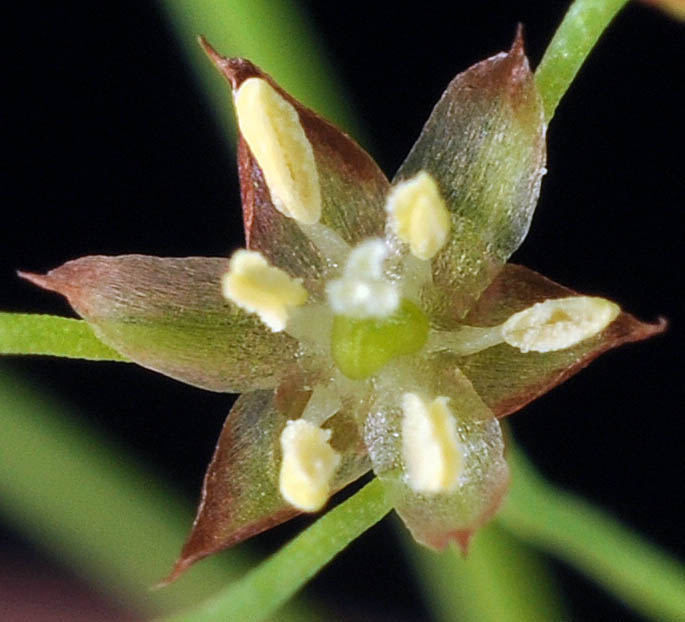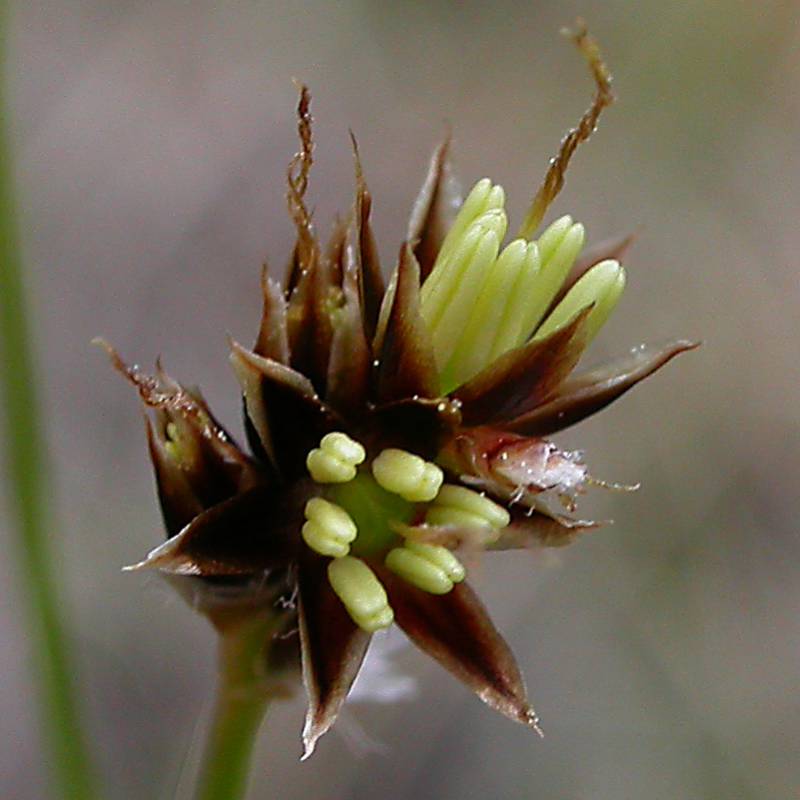Luzula divaricata
Luzula comosa
Basal leaves several;
cauline leaves 2-4, 3-10 mm. broad.
Basal leaves 5-15 cm. long and 3-7 mm. broad, the margins with long, soft, wavy hairs;
leaf bases sheathing, the throats of the sheaths with long, soft, wavy hairs.
Inflorescence a diffuse, nodding panicle up to 15 cm. long;
bracts somewhat lacerate, often with marginal hairs;
flowers usually borne singly;
perianth greenish or tawny to purplish-brown, the 6 segments 1.5-2 mm. long;
anthers 0.3-0.6 mm. long, shorter than the filaments;
style 0.2-0.4 mm. long, the stigmas 1 mm. long.
Inflorescence of 1-6 umbellate or sessile glomerules, spheric to nearly cylindric, 5-15 mm. long and 5-7 mm. wide, the branches straight, divergent;
perianth 2-5 mm. long, dark brown to pale with clear margins, the outer 3 tepals longer than the inner 3.
Capsule ovoid, greenish to purplish-brown, equalling the perianth.
Capsules spheric, greenish to dark brown, usually shorter than the perianth.
Luzula divaricata
Luzula comosa
- Local floras:
BC,
CA,
OR,
WA
- Local Web sites:
CalFlora,
CalPhotos,
Flora NW,
PNW Herbaria
WildflowerSearch
iNaturalist (observations)
USDA Plants Database
- LBJ Wildflower Center
- SEINet
- Plants of the World Online
- Encyclopedia of Life
- Wikipedia
- Google Image Search



